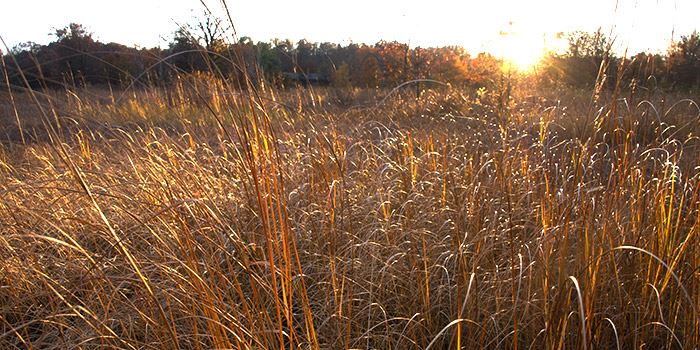Prairies Being Restored At Wildwood Preserve

Work To Begin With Winter Mowing
Prairie areas in Wildwood Preserve Metropark are undergoing intensive restoration work that will result in improved Oak Openings habitat for numerous species, including birds, more than 50 types of butterflies and several types of rare, native plants.
- Project Fact Sheet
Mowing is set to begin in February to cut existing vegetation to the ground. This spring, when the plants emerge, herbicides will be used selectively to weed out non-native invasive, species, allowing native plants to thrive.
“The result will be a very scenic prairie that is home to a wide variety of plants and animals,” said Tim Schetter, Metroparks director of natural resources.
The three-year project will be done in stages, leaving vegetation for wildlife to use as the mowed areas reestablish themselves. Most of the mowing will be done at night, when the park is closed.
First, crews will target an area known to regular park visitors as Susan’s Meadow, visible from the Yellow Trail. A portion of the area is also known to some as “logo tree prairie” because of a large oak tree that dominates the landscape and is featured in the Metroparks logo.
Other areas that will be managed this year include the Orange Trail Prairie, visible from the All Purpose Trail and behind the playground, as well as the Purple Trail Prairie, also known as the Stranahan Meadow.
The project is being funded with support from the Great Lakes Restoration Initiative, National Oceanic and Atmospheric Administration and Partners for Clean Streams.
Prairies (sometimes called meadows), are one of the distinctive natural features of the Oak Openings Region, which includes Wildwood. They are important because of the diversity of plant and animal life they support. “Acre for acre, the diversity in a prairie is going to be much more than in a woodland,” said Schetter. He added that the openness of a prairie allows sunlight to reach plants on the ground, unlike in a shady, wooded area.
Unfortunately, invasive, non-native species are taking over prairies, reproducing rapidly without any natural controls and threatening the survival of native species.
Mowing, herbicides and prescribed fires have been used successfully to restore prairies elsewhere in the Oak Openings Region, including at Oak Openings Preserve and Secor Metroparks. Results have been dramatic. A variety of native plants and animals have benefitted, including the Karner blue butterfly, a federally endangered species that was once extirpated from the region but was reintroduced at sites within the region.
What It Will Look Like
At the beginning of the project, the mowed areas will look very different from the overgrown field that park visitors are used to seeing. Signs will be posted and fact sheets will be available to inform visitors about the project. During the restoration work, Metroparks staff may be seen in the prairie areas applying herbicides using backpack sprayers.
All herbicide used on Metroparks lands are registered with the Environmental Protection agency, and members of the land management team are trained in state and federal pesticide laws.
The Wildwood Prairie Restoration Project will benefit not only sun-loving plants, but approximately 50 species of butterflies, as well as breeding birds such as field sparrows, chipping sparrows, song sparrows, indigo buntings and woodcocks, according to Karen Menard, stewardship services supervisor. Reptiles and amphibians, bats and mammals will also benefit from the habitat improvements, she added.
Schetter and Menard said visitors to Wildwood can expect to see results within three years as the prairie grows.
In a separate but related project, Metroparks crews have been cutting invasive, woody plants at Wildwood along Central Avenue. Like the nearby prairie project, the work is being done to stop the spread of invasive, non-native species.